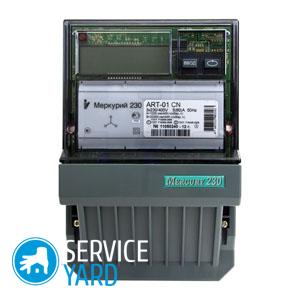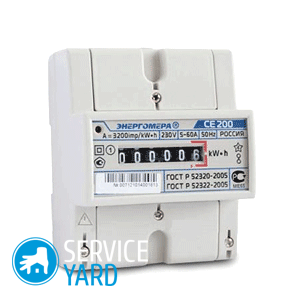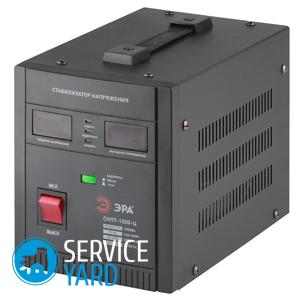What is the best electricity meter in the apartment?
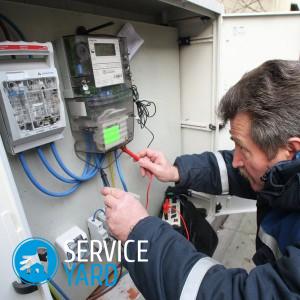
- Basic requirements
- Electronic and induction devices
- Single or three phase meters
- How to choose an electric meter in an apartment: single and multi-tariff meters
- Which meter should I choose for accuracy class?
- Current selection
- Types of installation
- Purchasing Tips
- Overview of common brands of electricity meters
- Stock footage
The topic of today's article is: which counter should be installed in the apartment. Formally, this should be done by a company that sells electricity, but in practice it turns out that this is a problem for buyers of this electricity. As in the famous aphorism of Ilf and Petrov about the drowning and the matter of helping them. Residents of the apartment must have a meter for electricity metering and replace it if it is outdated and does not meet modern requirements. It is here that it turns out that the correct choice of a counter is not an easy task. There are so many offers that you can get confused. To choose exactly what you need from hundreds of possible options seems completely unrealistic. Let's try to figure out this ocean from accounting devices, which electricity meter is better to put in an apartment or private house ..
to contents ↑Basic requirements
to contents ↑The most important requirements that apply to electric meters:
- Profitability (low power consumption of the device itself).
- A sufficiently long period of time between calibrations.
- Easy installation and use. For a detailed description of the process, see a separate article.“Installing an electricity meter”.
- Reliability.
- Silent work.
Electronic and induction devices
Consider how one differs from the other:
- Induction meter invented a long time ago. To this day, induction meters are considered the “classics of the genre” and are used in many old houses. The advantages of these devices are relatively low price, reliability and stability.
Important! The disadvantage of the induction device is a large measurement error. Due to the low accuracy, you will either pay too much or, on the contrary, underpay.
- Unlike induction, electronic devices are multifunctional and can be designed for several tariffs. They are more compact in size, which means that they take up less space on the opening panel. Their cost is higher, and in terms of the duration of the working resource they are inferior to induction.
Important! Choosing one or another type of counter, you must, among other things, take into account your own material capabilities. In addition, electronic devices have the following advantages:
- Equipped with a storage device.
- There is a modern display.
- There is a possibility for differentiated tariff reading.
- Equipped with metering mechanisms for calculating energy consumption at different rates.
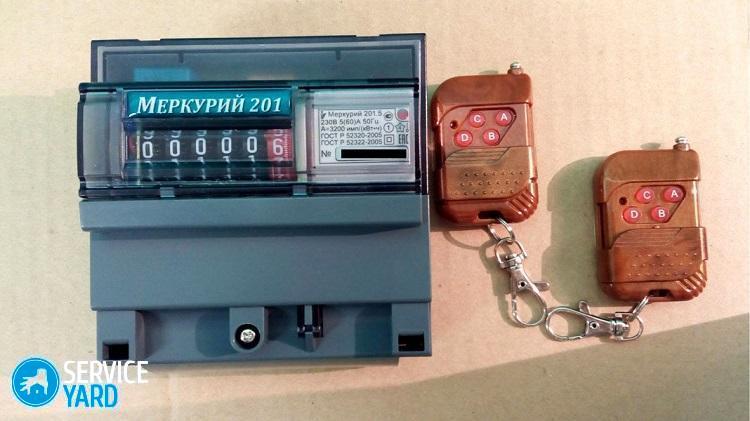
Single or three phase meters
Everything is more or less simple here. It all depends on what type of network you use:
- Single-phase (rated voltage is 220 V).
- Three-phase (rated voltage 380 V).
Which electricity meter is better to put in an apartment, and which in a private house? - Everything is simple here:
- Most apartments have single-phase meters. Both household appliances and home electrical networks are designed specifically for 220 volts. Therefore, in an ordinary apartment, a three-phase meter is unlikely to be needed. Yes, and registration of the device can be difficult.
- Three-phase meters are more suitable for private homes. Many types of equipment (electric motor, hot water boiler, etc.) are designed specifically for a voltage of 380 V.
Important! In addition, in a private house you will need a single-phase meter, which counts the energy consumption for devices operating from 220 V.
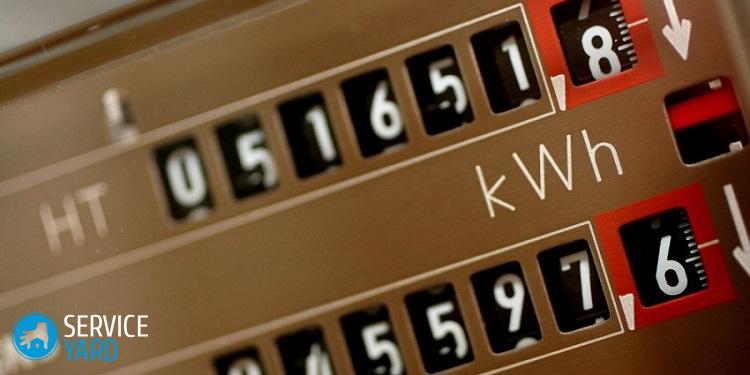
How to choose an electric meter in an apartment: single and multi-tariff meters
Not so long ago, all metering devices were induction and single-rate. With the advent of electronic devices on the market, it is possible to pay for consumed electricity at several (2, 3 and more) tariffs.
The peculiarity of a multi-tariff device is that it takes into account the energy consumption in time:
- 7 am-11pm.
- 11 pm-7am.
What electric meter is better to put in the apartment: for one or two tariffs?
- Night electricity is cheaper than day electricity, therefore, if you have acquired a two-tariff device, you can transfer the execution of “energy-intensive” work to the night. For example, turning on the heater or washing. Profitable? Undoubtedly. But at the same time, you need to clearly know the difference between day and night tariffs, as well as the amount of energy consumption for existing devices. In any case, you will have to pay a higher amount for a multi-tariff meter than for a single-rate meter.
- The choice of a meter for energy consumption depends on the region in which the subscriber lives and on what types of household appliances he uses. If you are an “owl” and you have a “night” way of life, then buying a multi-tariff meter is more preferable for you.
Important! Before deciding to purchase a meter of one kind or another, calculate your energy costs per month in two ways. If at the same time you get 30-50% savings, then it makes sense to purchase a device designed for several tariffs. If the difference is minimal, then you should not bother with the purchase of an expensive device. It is advisable to introduce a rational energy consumption regime in the house.
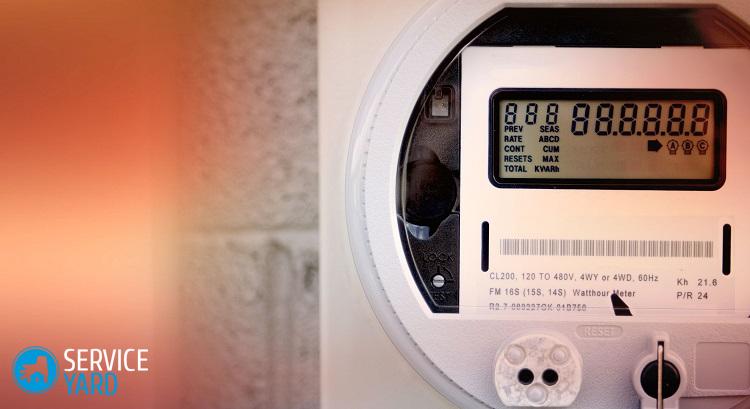
to contents ↑Important! The amount of payment depends on the amount of electricity consumed. In our separate review, we will teach you take meter readings.
Which meter should I choose for accuracy class?
Any measuring device has a certain measurement error. For an electric meter, this is a deviation from the true amount of electricity consumed. The greater the error, the device is considered less accurate:
- The margin of error for household meters of the modern type is 2%.
- For this reason, energy sales enterprises are forced to replace obsolete devices, the error for which is about 2.5%.
- However, do not rush to the other extreme. Devices with too little (about 0.2%) error give overestimated indicators, which is not at all beneficial for the consumer.
Important! The best option for an ordinary apartment is a device whose accuracy class is 2%. This is the value of the upper limit of error - why not take advantage of this loophole?
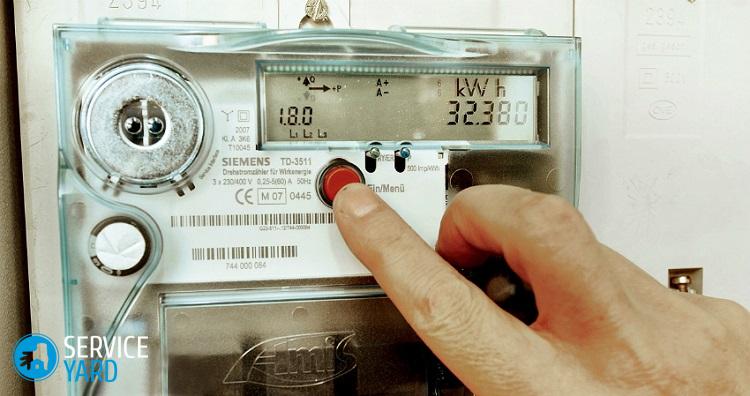
Current selection
The range of current strength with which single-phase devices operate is 5-80 A. The same indicator for three-phase devices is 50-100 A. The technical range for each device indicates a specific range of current strength.
to contents ↑Important! The less current variability, the lower the price.
Types of installation
There are 2 options for installing the counter:
- Under the bolts.
- To the din rail.
Important! The second option is often used in apartment buildings when assembling modular panels. Installation under bolts is more often used for street panels (private houses, input distribution devices). In accordance with the requirements, the best electricity meters in terms of installation are installation on a din rail inside the building.
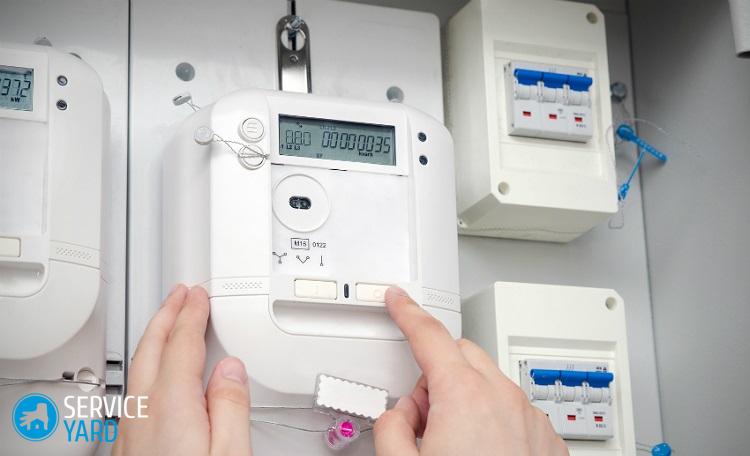
Purchasing Tips
Following these recommendations, you can choose the most suitable model for yourself:
- It is desirable to install powerful meters in the garage, since energy-intensive equipment can be used here, taking several of its varieties at the same time (compressors, welding machines, etc.).
- Be sure to check whether the product is sealed, as well as the date of verification. For single-phase devices, the prescription of verification should be no more than 2 years, and for three-phase devices - no more than a year.
- The purchase of a device with automated accounting for energy costs is impractical. This does not allow power utilities to track meter readings.
- Domestic models are not inferior in quality to foreign ones, so the purchase of an inexpensive, but reliable device is justified.
- Be sure to ask how much the repair of the device will cost.
- Noise from the operation of the meter is of considerable importance. At first glance, this is not a problem, but the constant annoying buzz annoys many people.
Important! The intertesting period for electronic devices is longer than for induction ones.

to contents ↑Important! Power surges can lead to breakdowns of expensive equipment. Follow the link to find outhow to choose a voltage regulator for a private house.
Overview of common brands of electricity meters
The rating of electricity meters will help you choose a specific model.
Mercury Series 201, 202:
- Electric meters of electronic type, single tariff.
- Designed for a maximum current value of 60/80 A, and are excellent for housing in multi-apartment buildings.
- The warranty is 6 years, and the actual working life is up to 30 years.
Important! The period between the two calibrations is 16 years.

“Mercury” multi-tariff:
- The device records energy costs at 4 rates.
- Maximum current 60 A.
- The duration of the verification interval is 16 years.
Important! It is possible to connect the device to a computer and remotely transmit credentials.
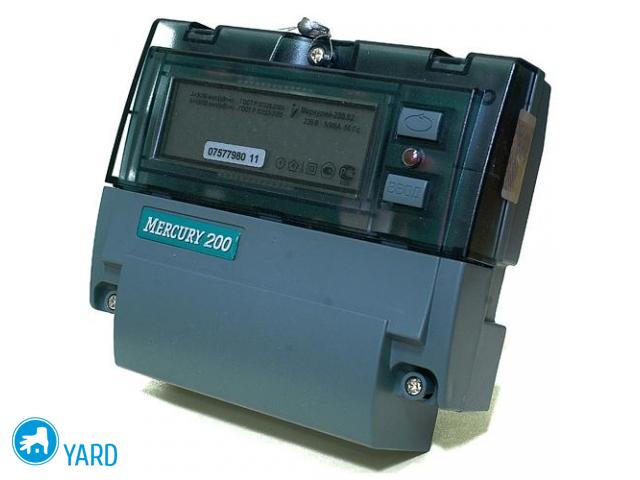
The Mercury counter is three-phase:
- The accuracy class is 1.0.
- The length of time between two calibrations is 16 years.
- The service life is 30 years with a 5-year warranty.
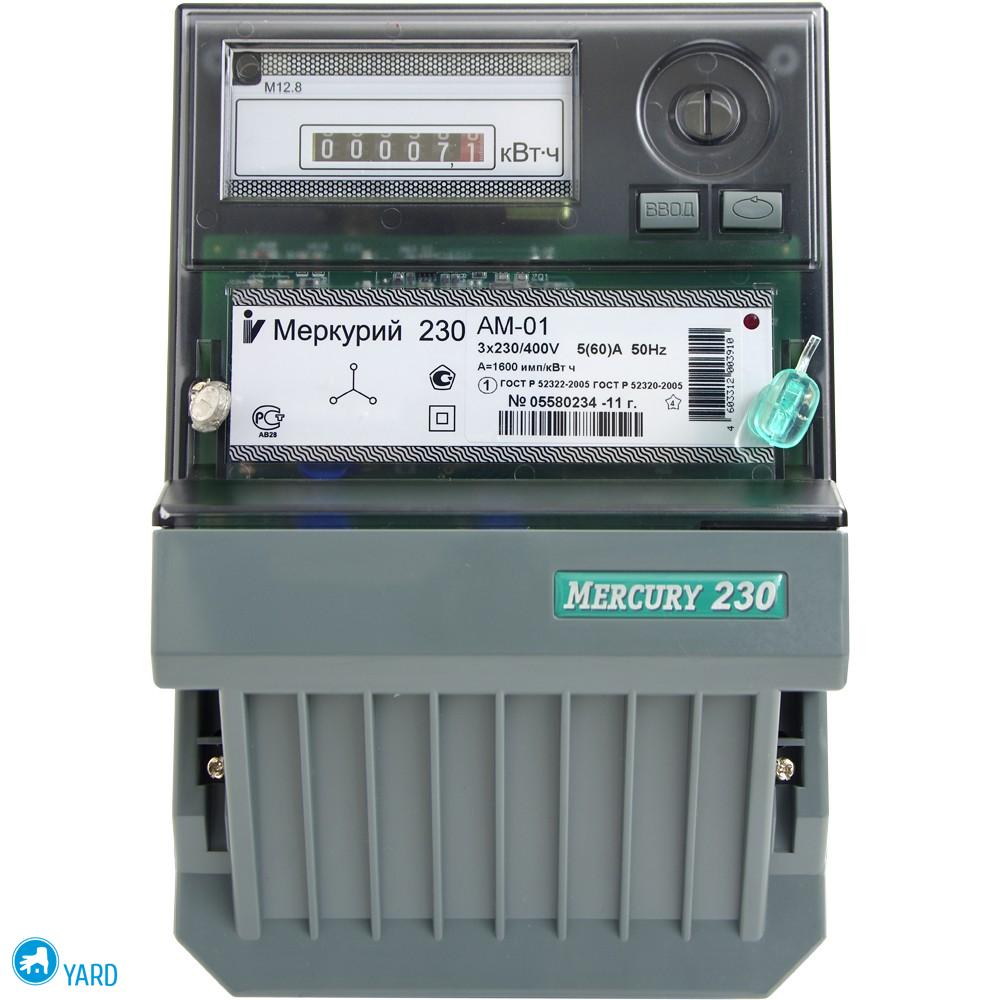
“Energomera” - single-phase:
- The maximum current load is 60/100 A.
- The working life of the device is 220 thousand hours.
- Design features allow you to take measurements of high accuracy.
- The device is immune to electromagnetic interference.
Important! There are various mounting options: for bolts or din rail.
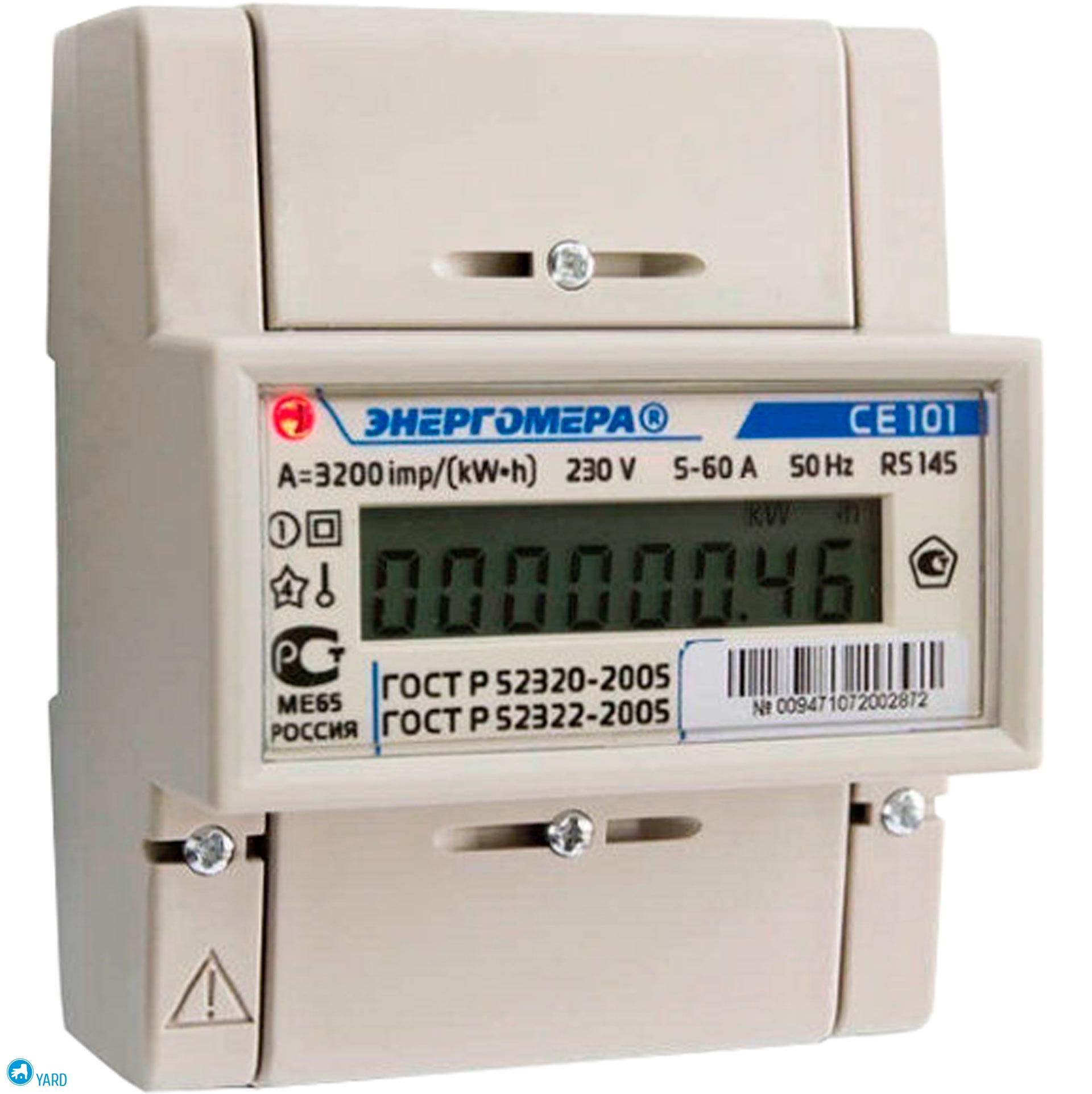
Energomera CE 102 multitariff:
- It is possible to measure electricity consumption at 4 tariffs.
- The device is equipped with a storage device.
- Measurement results are not lost if the meter is de-energized.
- Can be mounted on bolts or din rail.
Important! There is protection against mechanical stress and magnetic “hacking” of data.

Energomera - a three-phase device for a private house:
- Electrical meter for various types of loads in a three-phase circuit.
- The device takes into account 3 types of energy: total, active and reactive.
- Designed for a current value of 60/100 A, it can be connected via a transformer or directly.
- The warranty period is 4 years, the service life is 30 years.
Important! The interval between verification is 16 years.
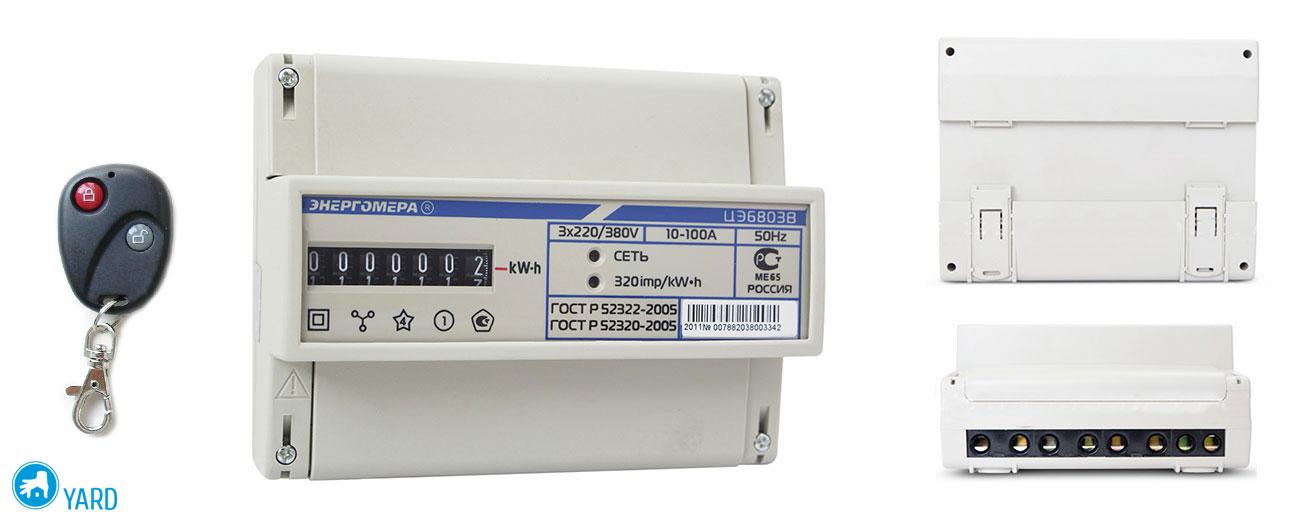
ABB counters
One-tariff devices are designed to account for energy consumption at home:
- Accuracy class 1.0.
- Maximum current 40/80 A.
- The devices are designed for mounting on a DIN rail, are used in the assembly of modular electrical panels.
Single-phase multi-tariff devices:
- Designed for networks with a current load of up to 80 A.
- Energy costs are taken into account at 2 tariffs.
- There is a storage device.
- It is possible to transmit data via infrared.
- The equipment calibration interval is 16 years.
- The term of work is 30 years, with a guarantee of up to 5 years.
Stock footage
The choice of the best metering option should necessarily coincide with the recommendations from the electricity supplier. Therefore, additional consultation in the organization of energy sales will not be superfluous.




